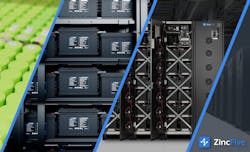Closing the Emissions Gap: Data Center Sustainability
Although scope 3 emissions form the vast majority of many organizations’ carbon footprints, they’re also the most difficult to track. As a result, many organizations have been hesitant to disclose this category of emissions. However, investor pressure to disclose scope 3 emissions is growing, and as companies look to reduce their emissions, data centers are increasingly under the microscope as an opportunity for impactful reductions, considering they are one of the most energy-intensive components of their customer’s supply chains.
The data center industry, and its associated energy use, is in the midst of rapid growth. In the US market alone, data center demand — measured by power consumption to reflect the number of servers a data center can house — is expected to reach 35 gigawatts (GW) by 2030, up from 17 GW in 2022. According to the iMasons Climate Accord, data centers currently account for around 2.4% of today’s global energy consumption.
When data center services are contracted out to outside parties, these emissions are classified under the data center clients’ scope 3 emissions. Data centers looking to address scope 3 emissions can leverage vendors that employ environmentally friendly practices and thus offer a reduced carbon footprint compared to their competitors.
Data centers can practice several methods to reduce their carbon footprint, such as modular construction, optimizing cool airflow, and alternative fuels for generators. Alternative battery chemistries for backup power systems can also help data centers improve their sustainability. For instance, nickel-zinc batteries save an average of 112kg of CO2 per kWh compared to lithium-ion batteries, and 36kg of CO2 relative to lead-acid batteries. They’re also manufactured more sustainably, with fewer emissions per kWh of stored energy. Over their lifecycle, nickel-zinc batteries provide four times the greenhouse gas avoidance of lead-acid batteries and six times that of lithium-ion, giving the technology a 9.4 out of a possible 10 Climate Impact Score according to Boundless Impact Research and Analytics.
As the appetite for scope 3 emissions disclosure increases, data centers should look to improve their value by adopting sustainable practices. Data center operations offer various opportunities for emission reductions, and those who want an edge in attracting and retaining customers should embrace and promote their sustainable practices, letting businesses know that they’re ready to support their data needs while also helping meet their ESG targets.
Tim Hysell is Co-founder and CEO of ZincFive. Contact them to learn more about their nickel-zinc batteries and power solutions.



